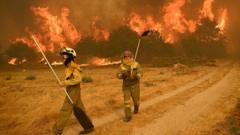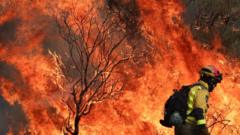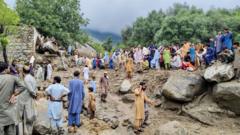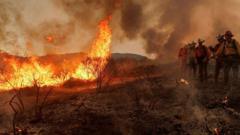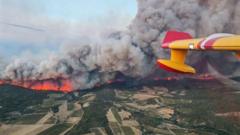The National Oceanic and Atmospheric Administration warns of an above-average hurricane season, exacerbated by critical staffing shortages due to government layoffs.
**Concerns Rise Over Impending Hurricane Season Amid NOAA Cuts**
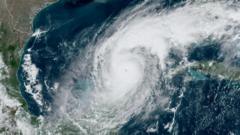
**Concerns Rise Over Impending Hurricane Season Amid NOAA Cuts**
As the Atlantic hurricane season approaches, experts raise alarms about the impacts of recent staff cuts on forecasting accuracy.
The coming Atlantic hurricane season is predicted to be more active than usual, as forecasters from the National Oceanic and Atmospheric Administration (NOAA) estimate between six and ten hurricanes may form between June and November. This forecast comes amid ongoing concerns regarding the impact of increased sea temperatures—largely linked to climate change—and cuts in research funding due to policies from the Trump administration. Predictions state that a total of 13 to 19 named tropical storms could occur, with several potentially developing into major hurricanes.
Scientists attribute this heightened activity to two main factors: warmer-than-average sea surface temperatures, which serve as fuel for hurricanes, and a reduced likelihood of an El Niño weather pattern that typically suppresses hurricane formation. However, unknown variables could affect these predictions, as climatic factors such as local air movements and dust levels can significantly impact hurricane development.
Compounding concerns, NOAA has faced significant staffing cuts, with hundreds of researchers laid off in recent years. This has led to fears that the National Weather Service—NOAA's branch responsible for forecasting and hazard warnings—may struggle to maintain quality forecasts and monitoring systems. Reports indicate that essential vacancies remain unfilled, potentially endangering public safety during significant weather events.
Experts stress that the lack of personnel risks decreasing the accuracy of hurricane forecasts, which have historically improved over time. Less data collection might hinder the ability to predict storm behaviors accurately, prompting warnings that upcoming storms may be less thoroughly tracked as a result of these cuts. The implications of these changes may extend beyond the US, affecting global weather forecasting as well.
Despite the challenges, an acting NOAA administrator expressed confidence in the agency's capabilities, stating that it continues to employ top scientists and make progress in weather forecasting endeavors. However, many remain skeptical about the potential ramifications of ongoing staffing reductions on the country's ability to effectively anticipate severe weather in the coming months and beyond.
Scientists attribute this heightened activity to two main factors: warmer-than-average sea surface temperatures, which serve as fuel for hurricanes, and a reduced likelihood of an El Niño weather pattern that typically suppresses hurricane formation. However, unknown variables could affect these predictions, as climatic factors such as local air movements and dust levels can significantly impact hurricane development.
Compounding concerns, NOAA has faced significant staffing cuts, with hundreds of researchers laid off in recent years. This has led to fears that the National Weather Service—NOAA's branch responsible for forecasting and hazard warnings—may struggle to maintain quality forecasts and monitoring systems. Reports indicate that essential vacancies remain unfilled, potentially endangering public safety during significant weather events.
Experts stress that the lack of personnel risks decreasing the accuracy of hurricane forecasts, which have historically improved over time. Less data collection might hinder the ability to predict storm behaviors accurately, prompting warnings that upcoming storms may be less thoroughly tracked as a result of these cuts. The implications of these changes may extend beyond the US, affecting global weather forecasting as well.
Despite the challenges, an acting NOAA administrator expressed confidence in the agency's capabilities, stating that it continues to employ top scientists and make progress in weather forecasting endeavors. However, many remain skeptical about the potential ramifications of ongoing staffing reductions on the country's ability to effectively anticipate severe weather in the coming months and beyond.

